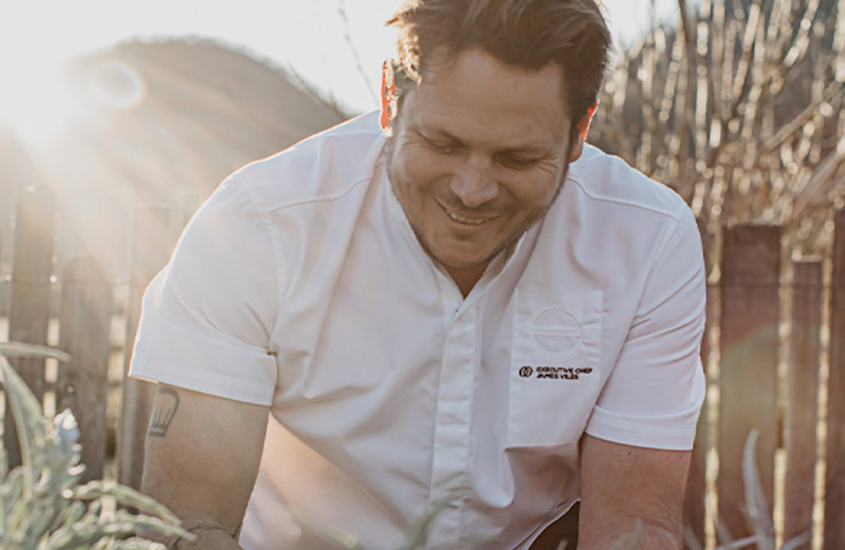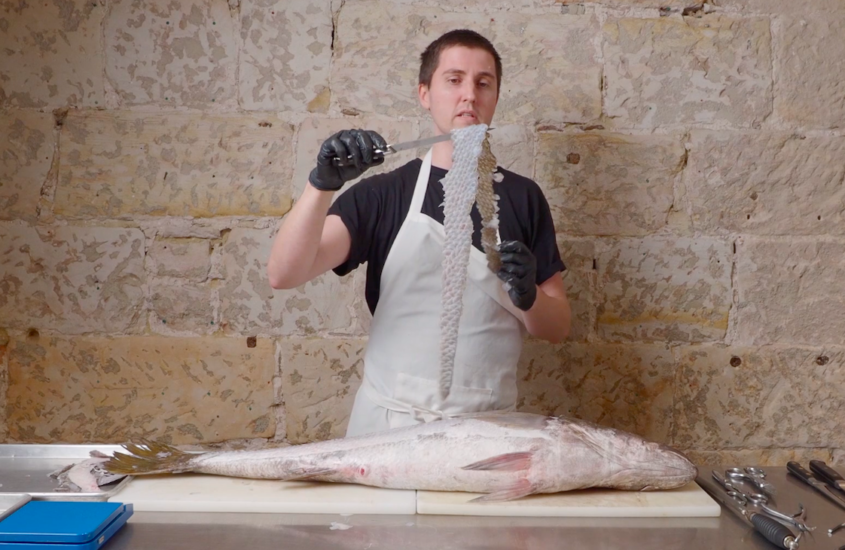By Tiffany Bader:
A couple of things about this recipe: one, it’s inspired by Julia Child’s Beef Bourguignon. If you aren’t familiar with her, Julia Child was a genius; a proponent of eating and living well, and an inspiration for chefs and home cooks alike. If you’ve watched the movie “Julie and Julia”, forget everything you saw and read her books, or watch an episode of “The French Chef” instead. Second point: I’ve tweaked her original recipe in a few ways, adding or substituting a few ingredients to make it my own, which I imagine, would make Julia proud.
The biggest change in my recipe below is the substitution of lean stewing beef for black bear neck meat. If you do not have black bear meat in your freezer or fridge, you can substitute neck meat from another large game animal or beef, but please try to source neck meat. Neck meat tends to be a tough cut, full of a connective tissue called collagen. It’s the perfect cut to use for slow braises and stews, as the collagen breaks down over the long, slow cooking period. As the collagen breaks down, it dissolves and surrounds the muscle fibres in gelatine, creating a succulent mouthfeel. This cut is popular in many asian cuisines, so if you don’t have game meat and can’t find it at your local butcher, check out a Chinese, Thai or Vietnamese grocery store as they will likely have it.
Another ingredient that I use here is black garlic, which can be easily made, or purchased from specialty food stores. It’s time intensive to make yourself, so ensure you have some on hand before proceeding or substitute caramelized garlic or even just regular garlic instead. The flavour will be different and won’t have the intense roasted caramelized richness from the black garlic but it will still be delicious.
Lastly, I add morels because they pop up in the woods roughly the same time of the year as the bears, and pair very nicely with the rich deep flavours in this stew. You can use fresh or dried morels and can substitute other wild mushrooms or cultivated ones if you prefer. The deep earthy richness of the morels is best, so use them if you are lucky enough to have them.
Because this is a very rich stew, I like to serve it with gremolata to brighten it up and to add balance to the dish. It’s not essential, but is a very nice addition.
Ingredients
- 2 tbsp butter/olive oil/bear fat – whatever type of fat you like to use
- 3 lbs bear neck meat, cut into 1 inch cubes
- 1 large carrot, peeled and cut into chunks
- 1 large leek, cleaned and sliced down the middle lengthwise and then cut into 1inch pieces
- 12 cloves of black garlic, or caramelized garlic. Use only two minced cloves if using fresh garlic
- 1 cup of fresh or dried morel mushrooms, or other wild dried mushrooms
- 3 large potatoes – medium waxy like a Yukon Gold or Kennebec – cut into large chunks
- 2 tbsp sea salt
- 2 tbsp freshly cracked pepper
- 1 tsp spanish paprika (optional)
- 2 tbsp flour
- 3 cups of red wine – something that you would drink, not cooking wine
- 2-3 cups of water, vegetable stock or beef stock
- 1 cup peas – can use fresh or frozen if fresh are not available
- couple of sprigs of fresh thyme
- two bay leaves
Method
Start by cutting your meat into cubes and seasoning with the salt and pepper. Heat up a dutch oven and add 1/4 of your fat of choice into the pan. When the fat is shimmering, add 1/4 of the meat to the pot and leave it alone. If you move it around too much to start, the meat won’t be able to brown properly. Once it’s browned, turn the pieces over and continue until the meat is caramelized all around. You don’t need to worry about cooking the meat all the way through at this point, just browning it. Keep an eye on the heat level as you don’t want to burn your meat, but need it to be hot to ensure proper browning. Remove the meat once browned and set aside on a large plate or bowl. Add more oil and another batch of meat and continue working in batches until the meat is all browned.
Once the meat is all browned, turn down the heat to medium, add a bit more oil if needed and add the leeks, carrots, thyme, bay leaves and, if using fresh garlic, add it at this time. If you are using whole black or caramelized garlic cloves, you will add them at a later step. Once the vegetables are cooked through ( 4-5 minutes) add the flour and paprika (if using), and stir well to cook through for an additional two minutes. Add the wine and stir to release all the browned bits and mix the flour-covered vegetables around. Reduce the wine for a minute and then add the black/caramelized garlic (if using), the dried or fresh morels, the chopped potatoes and the seared meat. Add the additional liquid (water or stock) until almost covering the meat and vegetables. Give everything a stir to combine, then put the lid on your dutch oven. Place it in the oven at 300*F for about two and a half to four hours, depending on your oven and meat. Pull out the dutch oven and taste a bit of meat at two hours to check if it’s tender. If not, pop it back in the oven until it is.
When your meat is tender, remove it from the oven and taste for final seasoning. Add the peas and stir to combine, then place the lid back on for a couple minutes. Serve in large bowls with a generous sprinkling of the gremolata on top.
The stew is even better the next day and freezes well if you want to portion out for later meals.













